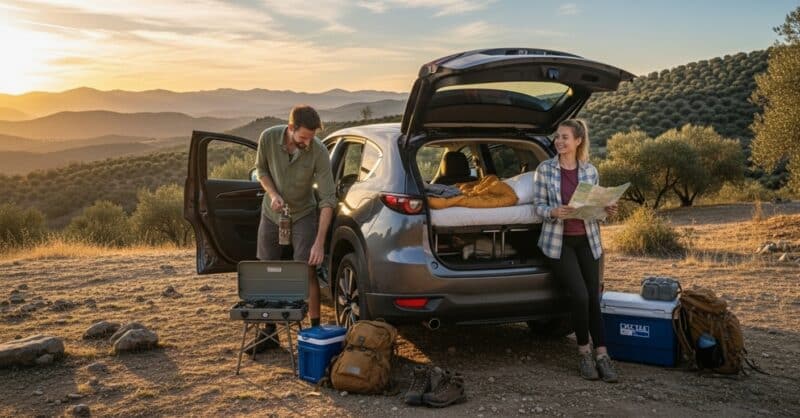 Car camping is growing in popularity across Europe. Whether you’re on a long road trip, saving on accommodation, or just testing the simplicity of sleeping in your car, the challenge is always the same: where can you safely and legally spend the night? The answer depends on your style of travel. Some prioritize getting from A to B as efficiently as possible, others combine destination with journey and prefer scenic detours, while a third group embraces full overlanding and off-road adventures.
Car camping is growing in popularity across Europe. Whether you’re on a long road trip, saving on accommodation, or just testing the simplicity of sleeping in your car, the challenge is always the same: where can you safely and legally spend the night? The answer depends on your style of travel. Some prioritize getting from A to B as efficiently as possible, others combine destination with journey and prefer scenic detours, while a third group embraces full overlanding and off-road adventures.
1. Functional: Motorway Service Areas
If your goal is simple—cover distance with minimal detours—then motorway rest areas are the most functional option. In Spain and Portugal these are called Áreas de Servicio, in France they’re known as Aires. They’re lit, open 24/7, often with fuel, bathrooms, and cafés. Truckers and long-haul drivers use them routinely, so car campers blend in easily.
Pros: Safe, monitored, quick in/out.
Cons: Noisy, not scenic.
2. Hybrid: Scenic Stops and Micro-Camps
For travelers who value the journey as much as the destination, stepping slightly off the highway opens up far more interesting overnight experiences. This includes:
- Community Apps:
- iOverlander – Wild camping spots, informal parking, water points.
- Park4Night – Mix of motorway rest stops, wild areas, and campsites.
- Camping-app.eu – Covers formal and informal spots with offline mode.
- Campy – Over 50,000 listings, easy to use on the go.
- Private Land Platforms:
These options give you the flexibility to stay close to your route when needed, but also to branch out into more scenic countryside when time allows.
3. Full Overlanding: Off-Road and Wild
If you’re equipped and seeking adventure, Europe also offers overlanding and wild camping opportunities. Scandinavia allows broad wild camping under allemansrätten (right to roam), while Spain, Portugal, and much of Central Europe have stricter rules but still pockets of accessible wild land.
- Use iOverlander for remote spots.
- Check local regulations before going off-road.
- Many off-road clubs and forums share GPS tracks and vetted overland camps.
Pros: Immersive, remote, adventurous.
Cons: Requires preparation, gear, and awareness of local laws.
4. Campsites That Welcome Cars
Even if you’re not in a van, traditional campsites are always an option. Many allow small vehicles and tents, or simply let you sleep in your car on a pitch. Apps such as ACSI Campsites Europe and camping.info make it easy to filter by facilities, family-friendly options, and location.
5. Safety & Legality
- Always check local rules—wild camping is allowed in some countries, restricted in others.
- Stick to official or app-listed spots when unsure.
- Park where others are overnighting for safety.
Conclusion
Car camping in Europe spans three styles:
- Point-to-point efficiency: Rest stops and service areas.
- Journey + destination: Scenic stops, private micro-camps, and app-listed rural spots.
- Overlanding: Off-road, wild, and remote experiences.
Your choice depends on time, gear, and appetite for adventure. With the right mix of planning and flexibility, car camping can be both practical and memorable.

Leave a Reply